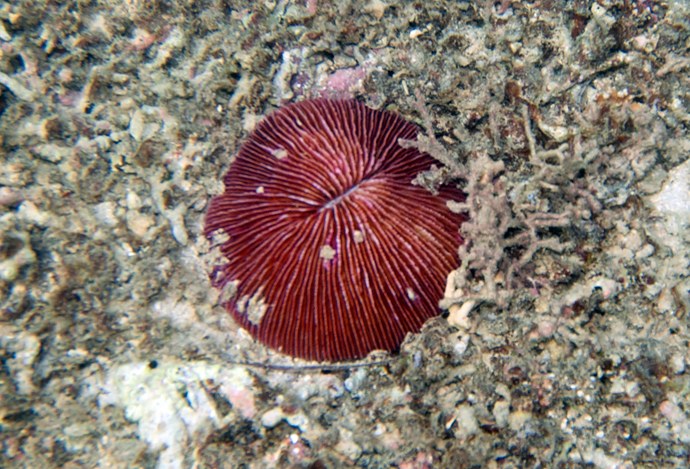Not as simple as it looks
When a is fully buried by sand and needs to raise itself, it doesn’t simply puff up like a balloon. Rather, these corals use a series of rhythmic inflation and deflation (“pulsed inflation”), aided by mucus excretion along with ciliary and peristaltic (pumping) action to move grains of sand outwards. It’s really a choreographed dance, and it’s kind of mesmerizing to watch.
Journal Reference: P. Bongaerts , B. W. Hoeksema, K. B. Hay, O. Hoegh-Guldberg. Mushroom corals overcome live burial through pulsed inflation. Coral Reefs. doi:10.1007/s00338-011-0862-z
So what happens when a coral is flipped upside down? Researchers have discovered Heliofungia limax (AKA slipper or tongue coral) inflates and deflates like a buried coral, but this time the inflation favors one side of its body in order to curl and tilt the coral. While it’s inflating, it “hops” along doing “push-ups” with its tentacles until it flips over. Researchers observed that the mouth of the corals are wide open immediately after flipping over, leading to the hypothesis that the coral also pumps out jets of water from its mouth to assist the turn-over.
Journal Reference: Bert W. Hoeksema, Pim Bongaerts. Mobility and self-righting by a free-living mushroom coral through pulsed inflation. Coral Reefs. doi:10.1007/s12526-015-0384-y
We thank Dr. Tim Wijgerde for referring the papers of his associates to Advanced Aquarist. Very fascinating stuff!










0 Comments